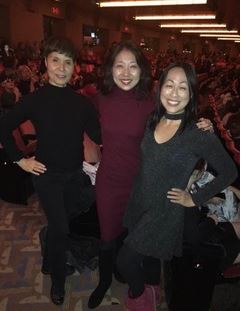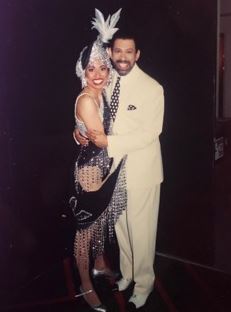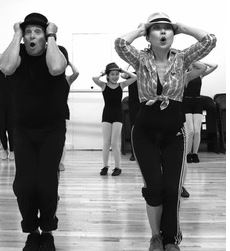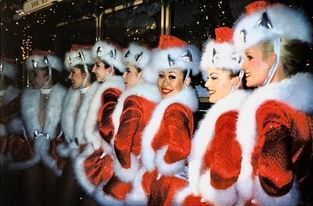Sally Hong danced with the Rockettes between 1996 and 2001
By Carina Nocon, AsAmNews Staff Writer
In 1994, Lainie Sakakura auditioned to be a Rockette after waiting in a line that wrapped around the Radio City Music Hall block in New York City. It wasn’t until after the Japanese American got hired that she realized she was one of the few non-White Rockettes.
On her first day in Radio City, another Asian American Rockette walked across the room toward her, shook her hand, and after she introduced herself she told Sakakura, “I’m the first. You’re the second… And it’s been 10 years.”
After decades of being one of America’s most iconic groups, the Rockettes didn’t hire the first non-White woman until 1985. Setsuko Maruhashi, another Japanese American dancer, opened a door for the upcoming women of color by being the first Asian American and non-White Rockette to be seen dancing on the line.
In 1987, Jennifer Jones was hired as the first African American Rockette.
Hundreds of women from all over America audition to be a part of the Rockettes at the Radio City Music Hall every year. Formed in 1925, the Rockettes are most famous for their precision dancing at annual holiday events such as the Radio City Christmas Spectacular and the Macy’s Thanksgiving Day Parade in New York City.

and Sally Hong at Radio City Music Hall in 2017
They rarely danced with or next to each other as Asian American and other non-White dancers were often seen as the token dancers on the line. When Sakakura and Maruhashi were Rockettes in New York City, they performed at opposite ends of the stage and barely saw each other.
Sakakura, Maruhashi, and Sally Hong, a Chinese American Rockette alum, were visiting Radio City when Sakakura had the idea to form a Rockettes of color group In 2017.
After Sakakura made the eager suggestion, Hong was on board.
There is no list of former Rockettes, so the women had to find other Rockettes of color on their own. Hong told AsAmNews she connected to as many people as possible, asking “Do you know somebody? Do you know this person? Do we have friends who could get us in touch with this person?”
The Rockettes of Color Alumnae (ROCA) began with 12 members, and stands with 61 members to date. It took over three years for the women to find each other.

“Diamonds” costume (black and silver) during
“The Great Radio City Spectacular”
Filipino American and former Rockette Rose Mallare said, “These are pioneer women… Even having left the Rockettes, they continue to do all these stellar projects. They’re also moms, raise children, and they’re teachers and choreographers. You won’t believe how amazing these women’s bio’s are.”
Former Rockettes said when ROCA had its first virtual meeting, they and other members didn’t realize how much they needed the support and empowerment from other women who understood the lack of representation of their own color.
“When you’re the token, I think sometimes you don’t know you need something because you’re walking this road alone. And you feel fine, it’s okay, you’re used to it,” Sakakura said. “But it’s interesting once you do experience the system, now that I know [other Rockettes of color], now that we know each other, sometimes you look back and realize ‘wow, I think I was lonely.’ I think there were things I was missing. I think I was on a lonely road because I didn’t have other people that shared any of my similar things.”
“We soldiered on and we were brave, but this is such a sisterhood. You feel so close to everybody because we’ve all lived the same thing,” Hong said.
Mallare said, “Something that ROCA wants to see Radio City Music Hall have is to just be more diverse and really make the line colorful.” She is first in her family to be born in America and became a Rockette in 1994.

Mallare, Hong, and Sakakura noted the extra work that has to be executed as a minority performer.
“We have to show that we can handle a lot of things. We’re smart, we’re educated, we’re talented. We can do so many things and we’re going to do it,” Mallare said.
The amount of representation that non-Whites receive on Broadway is small, and the amount of representation that Asian Americans receive is even smaller. This means the handful of colored people who are on stage not only represent themself, but they represent their whole culture with great responsibility.
Hong said, “When I’m on there, I try my best to represent everybody because I know if I’m not good, the next person might not be hired and it would be my fault.”
In 2018, the Asian American Performers Action Coalition reported that Asian American performers represent 4% of all roles within the theatre industry. Other communities of color represented no more than 25% of Broadway roles while Whites represented more than half of the industry.
Mallare, Hong, and Sakakura said ROCA has turned into a family whose mission is more than expanding diversity within the Rockettes or Broadway, but expanding and normalizing diversity everywhere.
ROCA is also aiming to be a nonprofit organization that will receive funding so they can provide scholarships and mentorship for the upcoming generations and future Rockettes.
To mentor the younger generations, ROCA has ideas of teaching performers different styles of dancing to improve their chances of getting hired. Aside from financial and educational support, ROCA hopes to take the new generations under their wings and help instill confidence, resilience, and unity within them.
While non-White performers are less seen on Broadway, these former Rockettes believe they have a role to play in making sure that the next generations don’t have to fight the same battles they did.
In their Broadway careers, some of the women have witnessed discriminatory situations such as directors wanting to use yellowface, characters with buck teeth, glasses, and a coolie hat, a China doll look, and taping eyes to make non-Asians look Asian.
They want the next generations to see the representation that they didn’t see growing up– not more tokens or cultural trends, but consistent and permanent diversity in all industries.

Jazz class to students.
“I would love for young people to understand this fight has been going on for many generations,” Sakakura said.
She said she has seen young performers spiral who are not able to move forward in their careers because they focus on the fact that the color of their skin might hold them back.
“It’s our job now, as the older generation to work really hard to fight those fights for you,” Sakakura said, referring to the younger non-White generations. “But Sally, me, other ones that are our age, what we’d like to do is work really hard to open our mouths and fight for you really hard. And then, when we open that door, rush through and be amazing.”
AsAmNews has Asian America in its heart. We’re an all-volunteer effort of dedicated staff and interns. Check out our new Instagram account. Go to our Twitter feed and Facebook page for more content. Please consider interning, joining our staff, or submitting a story.





Hi AsAM News,
Setsuko Maruhashi and Lanie Sakakura are Japanese, not Chinese.
Not all Asians are Chinese!
Please be specific, thank you:-)
Best,
Ako Dachs
This story is and has always been posted under several categories, including Japanese American. We never said the two were Chinese. However, we have now specifically mentioned their ethnicity in the story.
Hello! Was really pleased to read this article. I’m part of the Cabaret Diversity Network. We were founded this year, 2020, to be a support network for non white dancers in the cabaret, showgirl, chorus girl, entertainment side of the industry. Please connect with us on Instagram: @cabaretdiversitynetwork – we’d love to repost this article!
I’m proud of Rose Mallare making it to be the only Filipina NYC Rockette. She should write a book about her experience.